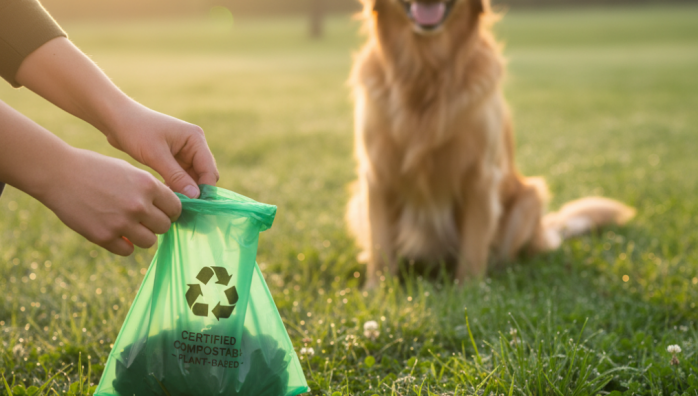Compostable Poop Bags for Sustainable Pets
by admin in Pet Care Basics 15 - Last Update November 19, 2025

I remember the exact moment it hit me. I was standing by the bin on our daily walk, tying off yet another little plastic bag, and I suddenly pictured the mountain of them I must have used over the years. As someone who tries to be mindful about recycling and reducing waste, this one daily habit felt like a huge contradiction. I was creating a little plastic tomb for my dog’s waste, destined to sit in a landfill for centuries. I knew I had to find a better way, and that\'s what started my journey into the world of compostable poop bags.
The \'biodegradable\' trap I fell into
My first step, like many people, was to grab the first box I saw labeled \'biodegradable\' or \'eco-friendly\'. I felt better for a while, thinking I’d solved the problem. But after doing some more digging, I was honestly disheartened to learn that these terms can be incredibly misleading. Many \'biodegradable\' plastic bags simply break down into smaller and smaller pieces of plastic, or microplastics, which can contaminate soil and water. They don\'t truly return to nature. It felt like I was just swapping one problem for another, slightly smaller one.
My switch to truly compostable bags: what I learned
Realizing my mistake, I started looking for a genuinely sustainable solution. This led me to certified compostable bags, and I learned that the key is in the certification. It’s the only way to be sure that a product will break down completely into natural elements under the right conditions.
Understanding the certifications (it\'s not as scary as it sounds)
At first, all the codes and logos felt overwhelming, but it\'s actually quite simple. I learned to look for two main certifications on the packaging. In the US, the gold standard is ASTM D6400. In Europe, it\'s EN 13432. Seeing one of these logos on the box gives me peace of mind that the bags have been rigorously tested and are proven to decompose properly in an industrial composting facility, leaving no toxic residue behind. It\'s become a simple checkpoint for me before I buy.
The practical side: are they strong enough?
I’ll admit, I was worried they’d be flimsy. Would they tear? Would they leak? Thankfully, my fears were unfounded. I\'ve been using certified compostable bags for over a year now, and I’ve never had a single issue with durability. They might feel a little softer or silkier than traditional plastic, but they are just as strong and reliable for even the biggest clean-ups. They hold up perfectly from the park to the bin.
How to actually compost them (the right way)
This is the most critical part of making the switch. Tossing a compostable bag in a landfill bin effectively defeats the purpose. These bags need oxygen and the specific conditions of a composting environment to break down. You can\'t just throw them in your backyard compost heap with your vegetable peels, as pet waste contains pathogens that home compost piles don\'t get hot enough to kill. The best solution is to find an industrial or commercial composting facility in your area that accepts pet waste. Some cities offer this through their green bin programs, and there are also specialized pet waste composting services. It took a quick search online for me to find a local option.
Making this one small change in my routine has made a big difference in how I feel about my impact as a pet parent. It\'s not about being perfectly \'zero-waste\' overnight, but about taking thoughtful steps toward a more sustainable life with my furry best friend.











